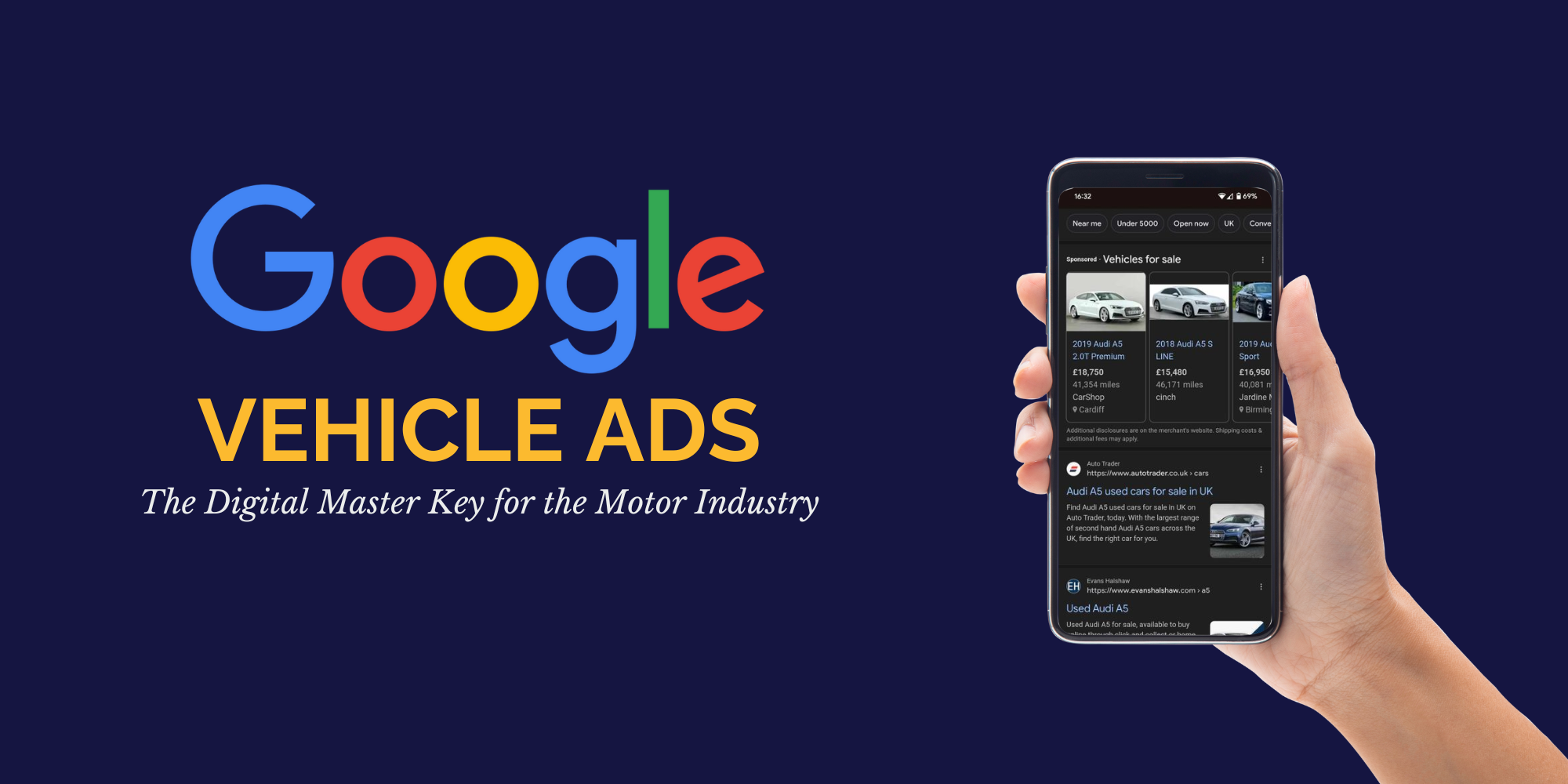How to Protect SEO Performance During a Site Migration
Arming yourself with the right tools to ensure a smooth site migration is important - find out how to protect your SEO during a migration today.
Read moreAd creative poses challenges that can make or break a campaign. Find out how to build the perfect ad creative with our helpful blog.
Good ad creative matters. Challenges can arise in getting it right, and underperforming creative can be a real thorn in the side. One thing many businesses encounter is the inability to balance the tension between how the brand is showcased and the performance of their creative. What a business needs from a brand awareness perspective, and then from a creative perspective, can be quite different from what the organisation needs from an acquisition perspective.
Your creative can manage the tension. The previous campaigns that didn’t deliver are a thing of the past now. We’ll share some best practice principles for your creative to help drive an improvement in performance and results, and how a data led approach can allow you to really hone in on what works.
A study found that there was a 65% uplift in brand awareness within the first 10 seconds of an ad being delivered, showcasing the short timeframe in which to capture the attention of the user and have some kind of impact. Another piece of research from Oracle saw a similar pattern, finding that 52% of sales impact comes from less than a two second impression.
This points to needing to maximise the earlier seconds of our creative – the first short, snappy period in which the majority of users are going to be viewing.
Social media is awash with creative, but not all of it is good quality. The challenge is understanding the difference between good and bad creative. It’s not always as obvious as you may think, it’s subjective, in that what we may actually think is a strong ad may not be performing and delivering results.
Robert Cialdini’s Principles of Persuasion is a great tool to use when thinking about your ad creative. There’s social proof (users like other users using the same brand or product), and there’s scarcity (playing on the fear of missing out). There’s also likeability, allowing you to leverage brand personality through social and display. Reciprocity is an interesting one – the idea that if you give something to the user, they’ll give you something in return. Finally, authorities (being an expert in something), and consistency are all-important things too.
Shaping your ads to meet the needs of social media and knowing the key things to get right is important. There are five key things that can truly hold back ad creative, and if you get these right, you’ll be in a strong position to see the impact of what you’re doing. We’ve picked out five ‘Social Ad Sins’ to fix when you’re working on creative that will help boost your results.
1. Creating your social creative with platforms in mind
It’s not unusual to see an amazing TV ad that a company wants to replicate across social and display channels. The problem here is that the creative is not designed with social in mind, and therefore it often doesn’t perform in the way that the company wants it to. Something designed to work well on a bigger screen may not work as well on a little hand-held one.
Social media needs short, snappy content – and repurposing from other channels often doesn’t meet that requirement. It needs to display well on mobile. Remember a little bit of sibilance: ‘small screen so keep it simple’.
One of the amazing opportunities we have through digital is the ability to test different audiences and different creative treatments. Ads need to be geared up to help create those variants. Minimising unnecessary detail by stripping out things that aren’t needed (like additional copy) and letting images do as much talking as possible is key.
2. Understanding the nuances of each platform and their audiences
It’s important to understand the nuances of each platform’s audience and to tailor your creative to these nuances. For example, what you need for Facebook might be quite different from what you need to reach your audience on Pinterest.
Regardless of the platform, however, you must ensure that your creative is not too long. That two to 10 second window where we’ll see maximum impact and making sure that the ad creative makes the most of that timeframe is really important. This is when you need to get your message across with real clarity – even if the user doesn’t go past that 10 second mark, the message (who we are, what we’re selling) should have still come across clearly.
This isn’t the time to be clever, this is the time to be direct.
3. Designing ads with conversion in mind
Not designing our ads with conversion in mind is a major pitfall. Most people consider social as an entertainment platform – it's where we go to engage with friends, family and celebrities or influencers. We also engage with news and brands on social media too. Sometimes, people consider it to be a place where you can’t really push a sales message, but done at the right time, in the right way, and targeted to the right people, it absolutely is.
Don’t hide your sales message. Make sure it’s there, particularly in the consideration and decision stage of the journey of that ad. Make it clear what you’re selling – be brave! Use the right calls to action and make it clear what the next step is, don’t leave the user guessing. Be literal and direct.
4. Utilising split testing
In ad creative, we can take the Conversion Rate Optimisation approach through A/B testing and refine our creative to drive more conversions. Use the opportunity to split test, using different calls to action to different audiences throughout platforms.
5. Designing ads with the audience opportunity in mind
There are huge targeting opportunities and segmentation opportunities, and the ad creative has to tap into them. Finding the persona(s) you want to reach and realising the ways to reach them is so important. Understanding how you’re segmenting is key too, and then mapping the creative to those segments.
You may have one product, but two different demographics, and for each demographic a different feature of your product might be more important to those users. Test, learn and refine to find what resonates. Use this opportunity to gather data, find what works with one audience but maybe not another, and refine your creative. Explore different options, gather the data and use the feedback to your advantage.
Ads can get served fairly regularly and over time, the users will see ads so often that they get a bit of ‘creative blindness’ or ‘creative fatigue’, where your ad just seems to blend into the background for the user. This is something we want to try and avoid!
Planning a creative refresh into your campaign from the start can be really helpful. If you see a decline in engagement, consider that your audience may be suffering a bit of creative fatigue and need a fresh look at what is on offer. It does not necessarily mean a big creative overhaul. Testing simple switches can make a significant difference, and this can include slightly different backgrounds, colours, or copy.
Appealing to an individuals’ sense of consistency is key. If they’ve purchased from your brand before, they are likely to want to do it again. They’re a customer of the brand and it appeals to them to come back again. Highlighting testimonials is a great idea here, where you can show how many people have purchased or enjoyed your product. Consistent positive reinforcement can work on a user who isn’t actually a previous customer.
There’s also the need to know what isn’t working. If you have three ads running, but only one is driving most of your conversions, then there’s something in that ad that the others just don’t have. Take that information and try new variations of the one that’s doing well. Also consider which channels are driving the least attention, and if it’s not working, pause it and try something else – or alternatively, if it’s working, invest more in there!
Great ad creative matters and can improve user engagement, campaign efficiency and ultimately, performance.
If you’re interested in discussing more about ad creative, book in a call with one of our experts today.
More articles you might be interested in:

Arming yourself with the right tools to ensure a smooth site migration is important - find out how to protect your SEO during a migration today.
Read more
Google employees have recently announced that the upcoming Google Core Update is set to be released in the coming weeks. Understanding and addressing...
Read more
Language matters. Any marketer worth their salt knows this. But when discussing gender and sexual orientation, that importance is amplified tenfold.
Read more
Advertising via Google is constantly evolving, and new ways to showcase your brand and business offering are regularly being rolled out. The latest...
Read more
When marketers think of thought leadership, there are names rather than ideas, that tend to spring to mind.
Read more
The UK market has been waiting with bated breath for Google’s Vehicle Ads release – so where is the update? Learn more.
Read more
With the release of GPT-4, how revolutionary will this tool be? Alan Rowe takes us through it...
Read more
To help prompt you to consider your approach to organic search integration, Dr. Dave Chaffey gives some practical tests you can apply to review your...
Read more